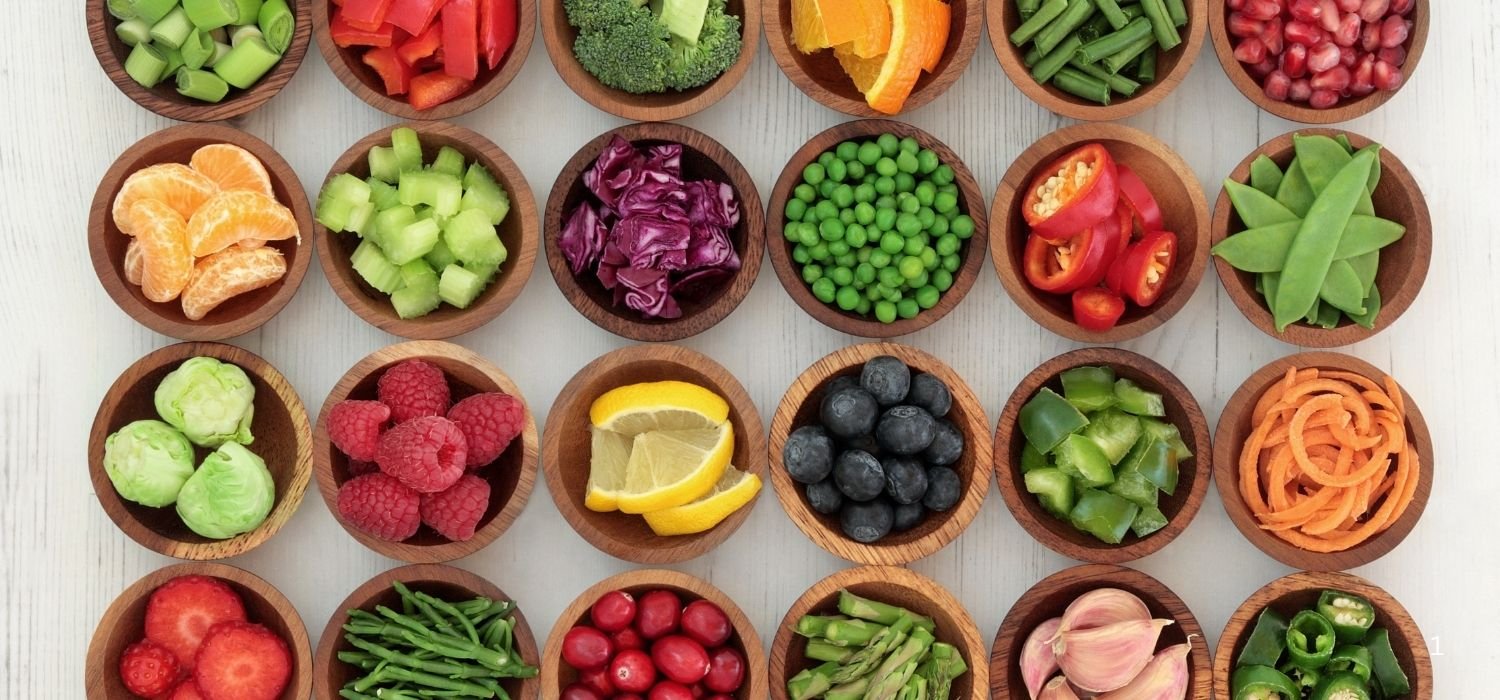No products in the cart.

You know what meal prep is: you prepare once and have meals ready for the next few days. It’s not about superfoods it’s about whole foods that are good for you. Now you can have more than just boring salads, chicken, and rice. You want to create a routine that saves you time and money, while also providing you with tasty, healthy meals.
You can use this guide. We’re going past beginner tips and into the nitty-gritty of advanced meal prep. You may think of it as making your own dietary plan. We’ll discuss topics ranging from macro-planning and food safety to optimizing your workflow and finding alternatives to your daily meals.
A Useful Definition of “Clean Eating”
Trends and tight diets have often exploited the idea of clean eating. To put it simply, it’s a way of eating that focuses on consuming more whole, nutrient-dense foods and fewer processed foods, added sugars, and excessive saturated fat. Making conscious choices is more important than being perfect.
If you follow the 80/20 rule, you can make most of your meals nutritious by eating lean proteins, whole grains, healthy fats, and a range of veggies that fit with your health goals. Maintaining this balance makes it easier to avoid the fatigue that comes with rigid dieting, as you can still enjoy your favorite foods, such as pizza and birthday cake.
When preparing your meals ahead of time, consider their nutritional value. Most active adults need to consume 20 to 30 grams of protein at each meal to maintain strong muscles and high energy levels. Try to consume between 25 and 38 grams of fiber per day to support your digestion and maintain stable blood sugar levels. Those principles will help you make a meal plan that you’ll like and appreciate.
Instead of viewing meal planning as another chore, consider it an integral part of your daily routine. If you want to make your daily life more consistent and easier to handle, treat your kitchen like a project manager.
Planning for Capacity: Check what you have before you start cooking. How much time can you really give? A whole Sunday afternoon or two 90-minute “prep blocks” during the week? How much space do you have in your fridge and freezer? This will tell you whether you can prepare for five days or three.
Frameworks for batch cooking:
Getting the parts ready: You can prep single items instead of whole meals. You could make a big pot of quinoa, roast some vegetables, grill a few chicken breasts, and hard-boil a dozen eggs. This gives you numerous ways to mix and match meals throughout the week.
When you batch cook meals, you prepare substantial dishes, such as chili, soup, or a large casserole, that can be cut into smaller portions. This approach is usually faster, but it doesn’t offer as many options.
The cook-chill-freeze method uses both of these methods. You prepare a few different meals, divide them up, and freeze half for the next week. This preserves a variety of ready-made meals in your freezer, helping you avoid boredom with your meals.
Food safety is not up for debate: The food business uses basic Hazard Analysis and Critical Control Points (HACCP) principles that apply here. Never keep prepared food in the “danger zone” (40°F – 140°F) for more than two hours. Cool goods quickly before putting them in the fridge or freezer. Label everything with its name and the date it was made. The “first in, first out” (FIFO) strategy is a straightforward rule: use your oldest preparations first.
Important tools and logistics
The system works well with the correct tools. You don’t need fancy gadgets, just the basics that work.
Boxes: Buy glass containers that are excellent quality and air-tight. They don’t hold smells or stains, can go in the microwave and oven, and last longer than plastic. Snap-lid containers are suitable for weekly fridge prep, but vacuum-sealing solutions are ideal for extending the shelf life of frozen dinners.
Tools for dividing up: A basic food scale is the best way to make sure you stick to your macro and consistency goals. You need measuring cups and spoons to divide out sauces and grains.
Grocery and Inventory Systems: Don’t go shopping without a plan. Create a digital list, such as one on Google Keep or a separate app, and organize it by store department. Make a list of what’s in your pantry, fridge, and freezer before you go shopping. This keeps things from becoming repetitive and reduces food waste.
Making the most of time and money
Making the most of time and money
A well-functioning system saves you time and money.
A 2-Hour Weekly Workflow is doable. Plan your prep time like a chef runs a kitchen line to get it done. Start with the foods that take the longest to cook, like roasting sweet potatoes or boiling grains. They can cut veggies, prepare sauces, or divide up snacks while they cook. The secret to being efficient is to stack tasks.
Calculating the cost per meal is another way to figure out how much you’re saving. For instance, preparing a bowl of chicken, broccoli, and rice at home might only cost $3.50, but ordering the same meal at a restaurant could cost $12. Seeing the price difference definitely emphasizes how much better it is to cook at home. To save even more money, arrange your meals around foods that are in season or on sale. Choose root veggies and strong greens for winter, and zucchini, tomatoes, and berries for summer.

Meal Plans & Flavor Ideas with Lots of Protein
Try developing a system that allows you to change your meals to keep them interesting and varied. Begin with a protein, then add a variety of carbs, vegetables, and sauces.
Example of an omnivore:
You can choose from grilled chicken breast, lean ground turkey, or baked salmon.
Carbs: sweet potatoes that have been roasted, brown rice, and quinoa.
Roasted broccoli, cooked green beans, and slices of bell pepper are some of the vegetables.
Plan Ahead Pattern:
Protein: Lentils, chickpeas, and tofu or tempeh that have been baked.
Carbs: black rice, farro, and butternut squash.
Vegetables: shredded carrots, sautéed greens, and roasted cauliflower.
Make a few simple, flexible flavor bases to mix things up. You can prepare three very different meals with the same fundamental ingredients by using a peanut-lime sauce, a lemon-herb vinaigrette, or a chipotle-yogurt dressing.
Common Mistakes and How to Fix Them
Even the most reliable systems can have problems. Here are several ways to fix common issues.
Palate Fatigue: The dilemma of “eating the same thing every day.”
Solution: Use the component prep approach. Every day, cook plain meats and grains and then add different sauces and toppings.
Texture: When you reheat veggies, they turn to mush.
Fix: Cook your vegetables just a little less than you normally would. They will finish cooking when you reheat them. Don’t mix sauces and dressings until you’re ready to eat.
Not safe Holding: Leaving food on the counter to chill for too long.
Fix: Place hot food in shallow containers to cool down quickly. Please place them in the fridge or freezer after they have cooled.
The “Ultra-Lean” Trap: Only eating chicken breasts and broccoli.
Fix: Add healthy fats for taste and hormone wellness. Put dressings made from olive oil, almonds, seeds, or avocado on your food.
A Sample 7-Day Meal Prep Plan
This plan has two primary batch-cooking anchors: a big pot of turkey chili and a few sheet pans of roasted fish and vegetables.
Breakfasts (Grab-and-Go): You can opt for protein oatmeal jars (made with oats, protein powder, chia seeds, and milk, all mixed in Mason jars) or hard-boiled eggs paired with fruit.
Lunches (Days 1–3): Turkey chili with Greek yogurt and avocado on the side.
Lunch (Days 4-5): Big salads with leftover roasted salmon flakes, chickpeas, and a lemon-herb vinaigrette dressing are a great option.
For dinner on days 1–3, have baked salmon with roasted sweet potatoes and broccoli.
For dinner on days 4 and 5, try serving leftover turkey chili over quinoa or spinach.
Greek yogurt cups, pre-measured almonds, and apple slices with peanut butter are also good snacks.
You can make meal planning a strong approach to help you reach your health and fitness goals by learning these advanced meal prep tips. It’s a useful ability that enables you to save time, money, and feel better. You can now access your calendar on your phone and schedule your next practice.
On my channel at ezoon. You can find more professional ideas, meal prep guidance, and nutrition recommendations. You can find useful tools to help you maintain your healthy habits throughout the year.
Beyond the Basics: A Systems Approach to Meal Prep
You already know the basics of meal prep: cook once, eat for days. You understand that “clean eating” isn’t about magical foods but about prioritizing whole, nutrient-dense ingredients. But now you’re ready to move past soggy salads and monotonous chicken and rice. You want to build an efficient, sustainable system that saves you time and money while delivering delicious, high-performance meals.
This guide is for you. We’re going beyond the beginner tips and into the operational details of advanced meal prep. Think of it as creating a personal logistics system for your nutrition. We’ll cover everything from macro-planning and food safety to workflow optimization and preventing palate fatigue.
A Practical Definition of “Clean Eating”
The term “clean eating” has been diluted by fads and restrictive rules. For our purposes, let’s define it simply: a nutritional approach focused on maximizing nutrient-dense whole foods and minimizing highly processed items, added sugars, and excessive saturated fats. It’s not about perfection; it’s about intention.
An effective way to apply this is the 80/20 principle. Eighty percent of the time, you focus on foods that align with your health goals: lean proteins, complex carbohydrates, healthy fats, and plenty of vegetables. The other twenty percent allows for flexibility the slice of pizza, the office birthday cake, the spontaneous dinner out. This approach prevents the burnout that often comes with overly strict diets.
For meal prep, this means planning around key nutritional targets. Aim for adequate protein (around 20-30g per meal for most active adults) to support muscle and satiety, and sufficient fiber (25-38g per day) for digestive health and blood sugar regulation. These two pillars form the foundation of a satisfying and effective meal plan.
Meal Prep as an Operations System
Treating meal prep like a system, not a chore, is the key to consistency. This means thinking like a project manager about your kitchen.
Capacity Planning: Before you cook, assess your resources. How much time can you realistically dedicate? A full Sunday afternoon, or two separate 90-minute “prep blocks” during the week? How much fridge and freezer space do you have? This will determine whether you can prep for five days or just three.
Batch-Cooking Frameworks:
Component Prep: Instead of making full meals, you prep individual ingredients. You might cook a large batch of quinoa, roast a tray of vegetables, grill several chicken breasts, and hard-boil a dozen eggs. This offers maximum flexibility to assemble different meals throughout the week.
Batch-Cooking Meals: This involves making complete dishes like chili, soup, or a large casserole that can be portioned out. This is often faster but offers less variety.
Cook-Chill-Freeze: A hybrid approach where you cook several dishes, portion them, and immediately freeze half for the following week. This prevents flavor fatigue and builds a library of ready-to-go meals.
Food Safety is Non-Negotiable: Basic Hazard Analysis and Critical Control Points (HACCP) principles from the food industry are relevant here. Cool foods rapidly before refrigerating or freezing; never leave cooked food in the “danger zone” (40°F – 140°F) for more than two hours. Label everything with the contents and date of preparation. A simple rule is the “first in, first out” (FIFO) system—use your oldest preps first.
Essential Tooling and Logistics
The right tools make the system run smoothly. You don’t need expensive gadgets, just functional basics.
Containers: Invest in a set of high-quality, airtight glass containers. They don’t stain or retain odors, are microwave- and oven-safe, and last longer than plastic. Vacuum-sealing systems are excellent for extending the life of freezer meals but snap-lid containers are perfectly sufficient for weekly fridge prep.
Portioning Tools: A simple food scale is your most powerful tool for consistency and hitting macro targets. Measuring cups and spoons are essential for portioning sauces and grains.
Grocery and Inventory Systems: Don’t go to the store without a plan. Use a digital list (like in Google Keep or a dedicated app) organized by store section. Before you shop, do a quick inventory of your pantry, fridge, and freezer. This prevents buying duplicates and reduces food waste.
Optimizing for Time and Cost
An efficient system saves you both time and money.
The 2-Hour Weekly Workflow is a realistic goal. To achieve it, plan your prep session like a chef runs a kitchen line. Start with the items that take the longest to cook (like roasting sweet potatoes or simmering grains). While they cook, move on to chopping vegetables, making sauces, or portioning out snacks. Overlapping tasks is the key to efficiency.
You can also calculate the unit economics of your meals. A homemade chicken, broccoli, and rice bowl might cost you $3.50 to make, while buying a similar meal would be $12. Seeing this data reinforces the value of your efforts. To lower costs further, build your meal plan around seasonal produce and sale items. A winter prep might feature root vegetables and hearty greens, while a summer prep would lean on zucchini, tomatoes, and berries.
High-Protein Templates and Flavor Systems
To avoid boredom, create a modular system. Plan around a protein base, then add different carbs, veggies, and sauces.
Omnivore Template:
Protein: Grilled chicken breast, lean ground turkey, baked salmon.
Carb: Quinoa, brown rice, roasted sweet potatoes.
Veggies: Roasted broccoli, steamed green beans, bell pepper strips.
Plant-Forward Template:
Protein: Baked tofu or tempeh, batch-cooked lentils, chickpea salad.
Carb: Farro, black rice, butternut squash.
Veggies: Sautéed kale, roasted cauliflower, shredded carrots.
Create a few simple, versatile flavor bases to change things up. A peanut-lime sauce, a lemon-herb vinaigrette, and a chipotle-yogurt dressing can make the same base ingredients feel like three entirely different meals.
Common Pitfalls and How to Fix Them
Even the best systems can run into trouble. Here’s how to troubleshoot common issues.
Palate Fatigue: The “same meal every day” problem.
Fix: Use the component prep method. Cook plain proteins and grains, then add different sauces and toppings each day.
Soggy Textures: Reheated vegetables turning to mush.
Fix: Undercook your vegetables slightly they will finish cooking when you reheat them. Keep sauces and dressings separate until you’re ready to eat.
Unsafe Holding: Letting food cool on the counter too long.
Fix: Distribute hot food into shallow containers to cool faster. Place them in the fridge or freezer as soon as they are no longer steaming hot.
The “Ultra-Lean” Trap: Relying only on chicken breast and broccoli.
Fix: Incorporate healthy fats for flavor and hormone health. Add avocado, nuts, seeds, or olive oil-based dressings to your meals.
Sample 7-Day Meal Prep Blueprint
This blueprint uses two main batch-cooking anchors: a large pot of turkey chili and several sheet pans of roasted salmon and vegetables.
Breakfasts (Grab-and-Go): Protein oatmeal jars (oats, protein powder, chia seeds, and milk, prepped in mason jars) or hard-boiled eggs with fruit.
Lunches (Days 1-3): Portions of the turkey chili with a side of Greek yogurt and avocado.
Lunches (Days 4-5): Large salads topped with leftover roasted salmon flakes, chickpeas, and a lemon-herb vinaigrette.
Dinners (Days 1-3): Portions of the roasted salmon with roasted broccoli and sweet potatoes.
Dinners (Days 4-5): Leftover turkey chili served over a bed of spinach or quinoa.
Snacks: Greek yogurt cups, pre-portioned almonds, apple slices with peanut butter.
By mastering these advanced principles, you transform meal prep from a weekly task into a powerful tool for achieving your health and fitness goals. It’s a skill that pays dividends in time, money, and well-being. Now, take a look at your calendar and schedule your next prep session.
For more expert tips, meal-prep guides, and evidence-based nutrition advice, be sure to visit my channel at ezoon.co. You'll find practical resources to keep your healthy habits on track all year long.
Tags: batch cooking, clean eating, fitness meal planning, food safety, health system, healthy food, healthy lifestyle, macro diet, meal prep, nutrition
Related posts
Discover the best non-toxic air fryers for healthy cooking in 2025. Explore top picks, key benefits, and safe, eco-friendly options for your kitchen. Continue reading
Natural and Easy Beauty.Top best Tips for a Glowing Face Continue reading
Diabetes is a condition where blood sugar levels rise due to lack or misuse of insulin. Learn its types, symptoms, causes, and simple ways to... Continue reading
10 Proven and Easy Ways to Lose Weight 1. Make Water Your Best Friend Drink at least 8 to 10 glasses of water daily. It... Continue reading
What to expect from 6G: terahertz links, AI-native networks, enhanced IoT, and the timeline for next-gen global connectivity. Continue reading













Add comment